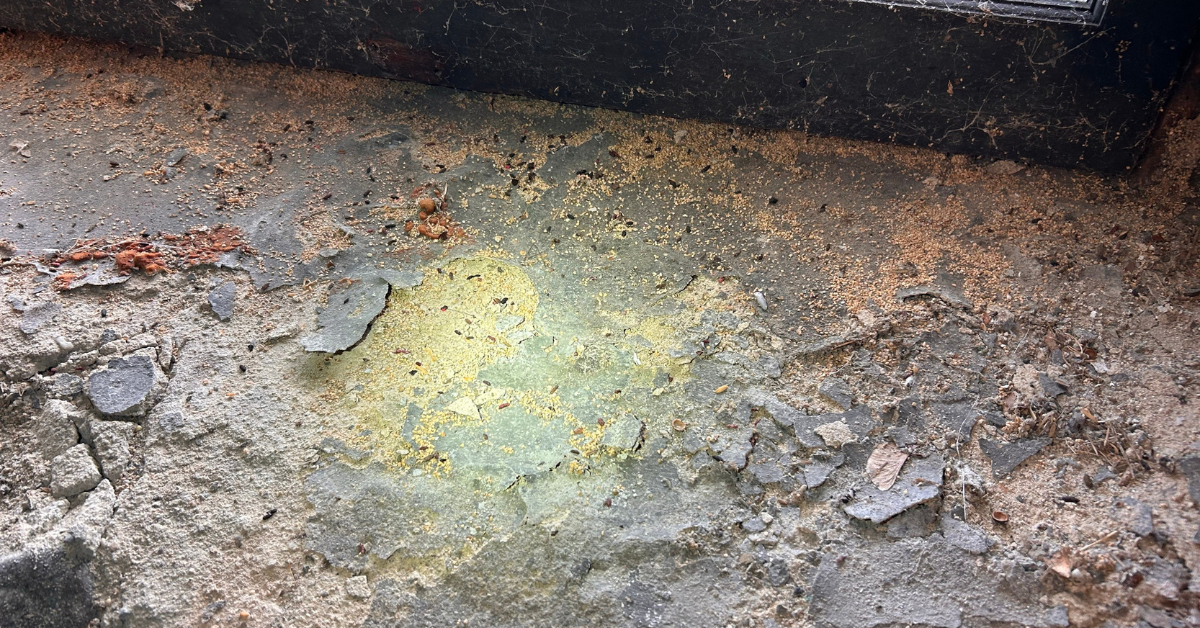Moth Explained | Blog - Thomas Pest Control
Moths are attracted to a few things: food (particularly grains), bright lights and, oddly enough, clothing. If you’ve ever reached into your closet or opened your cupboards and had a moth flutter out, you know this. Even worse is when you realize your precious grains or favorite sweater has been totally eviscerated. So why are moths so attracted to grains, bright lights and...clothing? Here at Thomas Pest Services, we did some research, and we think we’ve solved some of these mysteries--and the answers may surprise you.
Why Moths Eat Clothes
The Mystery: Why do moths eat wool?
The Explanation: Clothes Moths don’t actually eat clothes--not full-grown ones anyway. As it turns out, it’s actually moth larvae, laid by a mother moth in particular articles of clothing, that are eating clothing. A mother moth can lay between fifty and one thousand eggs into cloth or clothing, and once those eggs hatch into moth larvae they begin eating up the fabric to sustain themselves. So the short of it is that moth larvae are actually the ones doing the dirty work.
Moth larvae like eating keratin-heavy animal fibers like silk, wool, cashmere, angora or fu are all part of a healthy diet for moth larvae because keratin-based fabrics have what scientists call, “fibrous structural proteins”. These proteins are a vital part of a moth larvae’s diet, which is why they are such an appealing item for moth mothers to lay their eggs on.
Mystery Status: SOLVED
Moths in the Pantry
The Mystery: Where do pantry moths come from?
The Explanation: There is a specific type of moth that is interested in grain: the Indian Meal Moth. These are the moths that will somewhat mysteriously fly out of your pantry or cupboards and leave you scratching your head. So how do they get in there in the first place? Well, much like specific types of clothing are appealing places for mother moths to lay eggs, concentrated amounts of grain are a good nesting ground because they provide future larvae instant access to lots of food.
Despite food manufacturers' best efforts, a few moth eggs occasionally make it into grains, and they eventually become full-grown moths--which is why adult moths will fly out of food storage areas seemingly out of the blue.
Mystery Status: SOLVED
Moths and Artificial Light
The Mystery: Why are moths attracted to artificial light?
The Explanation: The old expression, “like a moth to the flame” holds true today. You’ve probably seen a moth (or a bunch) fluttering around an artificial light, like in the picture above. But why? The truth is, no one is entirely sure--though there are some theories.
Some entomologists believe bright lights throw moths' internal navigational compass out of whack, causing them to become attracted to the most prominent thing visible: light.
Another is that lights give off frequencies similar to that of pheromones given off by female moths’ when they are trying to mate. The theory goes that male moths are attracted to light because they mistakenly think it is a female moth looking to mate. However, neither of these theories is confirmed, and so the mystery of the moth attracted to the flame lives on.
Mystery Status: UNSOLVED
Getting Rid of Moths
So now that we know all about some of the mysteries of moths’, let’s address what you can do to get rid of them. According to healthline.com, there are a few measures that you can take to make sure moths stay out of your closet and pantry:
- Keep a clean home. Moth eggs and larvae thrive especially well in dust and dirt. Try to vacuum and dust regularly to both get rid of existing moth eggs/larvae and make sure any potential moth offspring don’t have a solid breeding ground.
- Wash and dry clothes in high heat. High heat environments can kill moth eggs and moth larvae. If you discover a moth presence in your home through a ruined piece of clothing, give your clothes a good wash and a hot dry. If you have clothing that can’t be dried at high heats, take your wet clothes and throw them in the freezer for 24 hours. You might come off a little weird with a pile of clothes in your freezer, but trust us, it works.
Now that you know all that you probably ever wanted to about moths' weird and unusual tendencies it’s time to think about other pests. Summer is just around the corner, and that means a host of inconsiderate wildlife and insect invaders are revving to turn your home, yard or business into their own personal stomping ground.
This makes comprehensive and all-inclusive pest control all the more important and at Thomas Pest Services we have the solution Our Complete Care Plan offers year-round protection for all kinds of pests (including meal moths), and the summer is the perfect time to start!


.png)
.png)
